The 22nd IMPLANTOLOGY conference took place, in Prague, on Friday, 6th April 2018. Nearly 200 dental implantologists from the Czech Republic and abroad took part in the event. This year, six Czech lecturers and one foreign shared their experience.
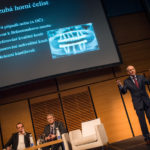 It has become a tradition that the professional programme of the seminar is opened with a short speech by Ing. Jakub Strnad, PhD, CEO of LASAK. His speech was followed by the first lecture, presented by Prof. Antonin Simunek, MD, PhD, and Dana Kopecka, MD, PhD, from the Department of Dentistry, Faculty of Medicine in Hradec Kralove. In their lecture, entitled “Principles of Effective Implantology”, the lecturers focused on four basic indications for dental implants (loss of one tooth, large gap, shortened dental arch and edentulous jaw). For each of these indications, they selected the most typical situations, and emphasised the principles that need to be followed with a particular
It has become a tradition that the professional programme of the seminar is opened with a short speech by Ing. Jakub Strnad, PhD, CEO of LASAK. His speech was followed by the first lecture, presented by Prof. Antonin Simunek, MD, PhD, and Dana Kopecka, MD, PhD, from the Department of Dentistry, Faculty of Medicine in Hradec Kralove. In their lecture, entitled “Principles of Effective Implantology”, the lecturers focused on four basic indications for dental implants (loss of one tooth, large gap, shortened dental arch and edentulous jaw). For each of these indications, they selected the most typical situations, and emphasised the principles that need to be followed with a particular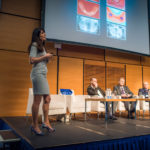 indication. In the lecture, the most common mistakes and consequences resulting from failure to adhere to these rules were demonstrated. The lecturers also mentioned highly effective, but not widely known, types of implants. The lecturers shared their experiences with tilted implants and highlighted the biomechanical advantages, which this type of placement may produce. According to the lecturers, the „tilted“ principle in the edentulous jaw is most useful in connection with the All-on-6 and All-on-4 concepts, respectively in all All-on-X concepts. They also addressed the issue of the minimisation of the amount paid by patients in order to improve the availability of implant treatment.
indication. In the lecture, the most common mistakes and consequences resulting from failure to adhere to these rules were demonstrated. The lecturers also mentioned highly effective, but not widely known, types of implants. The lecturers shared their experiences with tilted implants and highlighted the biomechanical advantages, which this type of placement may produce. According to the lecturers, the „tilted“ principle in the edentulous jaw is most useful in connection with the All-on-6 and All-on-4 concepts, respectively in all All-on-X concepts. They also addressed the issue of the minimisation of the amount paid by patients in order to improve the availability of implant treatment.
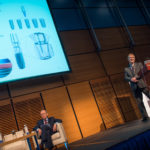 The results of a Clinical Follow-up Study of Early Loaded BioniQ implants with BIO-surface after two years of the implant in function were presented to the audience by Zdenek Novak, MD, from his private dental clinic, in Prague. The clinical study presented evaluated, clinically and radiographically, the success rate of BioniQ implants, the stability and behavior of hard and soft tissues surrounding the implants in the course of the healing period and after one and two years of the implant in function. The clinical study evaluated 97 early loaded BioniQ implants implanted in 44 patients. After two years in function, the implants and restorations were stable and healthy. The results of this statistically thoroughly prepared and documented clinical study prove that BioniQ implants with the bioactive BIO-surface are reliable and predictable in the procedure with a shortened healing time for the early-loaded implants. This clinical study also showed that the results of the BioniQ system are comparable to the results of the best-documented systems in the market.
The results of a Clinical Follow-up Study of Early Loaded BioniQ implants with BIO-surface after two years of the implant in function were presented to the audience by Zdenek Novak, MD, from his private dental clinic, in Prague. The clinical study presented evaluated, clinically and radiographically, the success rate of BioniQ implants, the stability and behavior of hard and soft tissues surrounding the implants in the course of the healing period and after one and two years of the implant in function. The clinical study evaluated 97 early loaded BioniQ implants implanted in 44 patients. After two years in function, the implants and restorations were stable and healthy. The results of this statistically thoroughly prepared and documented clinical study prove that BioniQ implants with the bioactive BIO-surface are reliable and predictable in the procedure with a shortened healing time for the early-loaded implants. This clinical study also showed that the results of the BioniQ system are comparable to the results of the best-documented systems in the market.
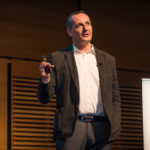 The basic patient’s requirement for long durability and no problems with implants goes hand-in-hand with a number of problems regardless of their widespread use in general dental practice. Peri-implantitis is one of these problems, as presented by Associate Professor Martin Starosta, MD, PhD, from the Institute of Dentistry and Oral Sciences, Faculty of Medicine and Dentistry, Palacký University Olomouc. Among other things, his lecture covered the factors contributing to the origination of peri-implantitis (both local and general) focusing on its prevention and ways how the resulting problems can be coped with. He also pointed out that not only osseointegration, but also periointegration, has a significant effect on the long-term success of implants, and he also emphasised the importance of the attached gingiva surrounding the implants.
The basic patient’s requirement for long durability and no problems with implants goes hand-in-hand with a number of problems regardless of their widespread use in general dental practice. Peri-implantitis is one of these problems, as presented by Associate Professor Martin Starosta, MD, PhD, from the Institute of Dentistry and Oral Sciences, Faculty of Medicine and Dentistry, Palacký University Olomouc. Among other things, his lecture covered the factors contributing to the origination of peri-implantitis (both local and general) focusing on its prevention and ways how the resulting problems can be coped with. He also pointed out that not only osseointegration, but also periointegration, has a significant effect on the long-term success of implants, and he also emphasised the importance of the attached gingiva surrounding the implants.
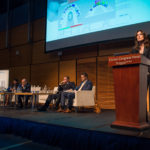 The second lecture session was opened by Spanish lecturer Agurne Uribarri, PhD, MDS, with her lecture entitled “Implant-Abutment-Framework Connection: Requirements for a Long-Term Success”. According to her, the implant-supported restorations have to be understood as a real „implant-abutment-suprastructure complex“ that must be able to respond to the biological requirements of oral tissues, and to the mechanical requirements of occlusal forces. She demonstrated, with examples, that the morphological characteristics of this configuration, the precision of fit methods of elaboration and the materials used, may be the cause of mechanical and biological complications in predisposed patients, even though more than 80% of patients guess that the implants have no risks and are good or better than natural teeth. In her lecture, she compared, with full details, the precision of platforms and connections with various methods of production where the CAD/CAM milling method clearly dominated. In the case of LASAK CadCam suprastructures, significantly higher platform accuracy was measured than commonly referenced (2-26 μm micro joint versus 50 μm average joint reported in the literature).
The second lecture session was opened by Spanish lecturer Agurne Uribarri, PhD, MDS, with her lecture entitled “Implant-Abutment-Framework Connection: Requirements for a Long-Term Success”. According to her, the implant-supported restorations have to be understood as a real „implant-abutment-suprastructure complex“ that must be able to respond to the biological requirements of oral tissues, and to the mechanical requirements of occlusal forces. She demonstrated, with examples, that the morphological characteristics of this configuration, the precision of fit methods of elaboration and the materials used, may be the cause of mechanical and biological complications in predisposed patients, even though more than 80% of patients guess that the implants have no risks and are good or better than natural teeth. In her lecture, she compared, with full details, the precision of platforms and connections with various methods of production where the CAD/CAM milling method clearly dominated. In the case of LASAK CadCam suprastructures, significantly higher platform accuracy was measured than commonly referenced (2-26 μm micro joint versus 50 μm average joint reported in the literature).
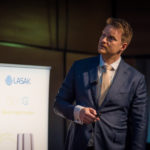 Jan Drazan, MD, presented the methods and techniques that are successfully used at his Dentkomplex Clinic in Slany. In more than twenty case studies, he presented the procedures targeted to achieve perfect aesthetics in the frontal section. Implantation in the aesthetic zone is one of the most demanding tasks faced by implantologists. Not only must they respect the patient’s requirements and expectations, but the availability and quality of both hard and soft tissues, the line of smile, and other important factors, also need to be taken into account. The lecture was focused on bone augmentation, soft tissue augmentation by connective grafts, and the procedure for gingiva remodelling before final prosthetic treatment. The presented case studies, consisting of patients with tooth injuries, showed how to proceed in the case of implantation in patients suffering with periodontal diseases, how to work effectively co-operate with orthodontists during implantation, and, last but not least, how to cope with cases of iatrogenic damage.
Jan Drazan, MD, presented the methods and techniques that are successfully used at his Dentkomplex Clinic in Slany. In more than twenty case studies, he presented the procedures targeted to achieve perfect aesthetics in the frontal section. Implantation in the aesthetic zone is one of the most demanding tasks faced by implantologists. Not only must they respect the patient’s requirements and expectations, but the availability and quality of both hard and soft tissues, the line of smile, and other important factors, also need to be taken into account. The lecture was focused on bone augmentation, soft tissue augmentation by connective grafts, and the procedure for gingiva remodelling before final prosthetic treatment. The presented case studies, consisting of patients with tooth injuries, showed how to proceed in the case of implantation in patients suffering with periodontal diseases, how to work effectively co-operate with orthodontists during implantation, and, last but not least, how to cope with cases of iatrogenic damage.
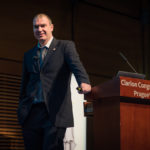 In the final presentation, Michal Zitnansky, MD, from Private dental clinic in Jesenik, showed the aesthetic results of treatment using implants in the frontal section. Both the case reports and video demonstrations of his work sparked great interest from his audience. The examples of his work were also very interesting; they were not successful at the beginning, but he managed to finish them perfectly. The author, in his paper, covered case studies concerning the following areas: immediate implantation, extraction and socket preservation with healing and follow-up implantation with immediate loading, augmentation by a connective tissue graft, papillae remodelling using a provisional crown, implantation with immediate load, implant failure and follow-up reimplantation with closed healing and the socket shield technique for implant placing. An example of the socket shield technique for implant placing received recognition also from other lecturers in the final discussion.
In the final presentation, Michal Zitnansky, MD, from Private dental clinic in Jesenik, showed the aesthetic results of treatment using implants in the frontal section. Both the case reports and video demonstrations of his work sparked great interest from his audience. The examples of his work were also very interesting; they were not successful at the beginning, but he managed to finish them perfectly. The author, in his paper, covered case studies concerning the following areas: immediate implantation, extraction and socket preservation with healing and follow-up implantation with immediate loading, augmentation by a connective tissue graft, papillae remodelling using a provisional crown, implantation with immediate load, implant failure and follow-up reimplantation with closed healing and the socket shield technique for implant placing. An example of the socket shield technique for implant placing received recognition also from other lecturers in the final discussion.
Short version (1:29)
Long version (5:08)